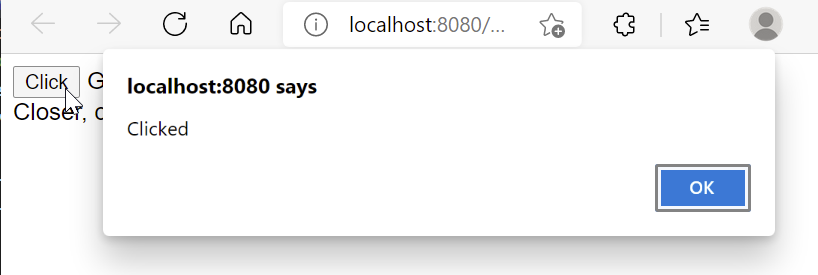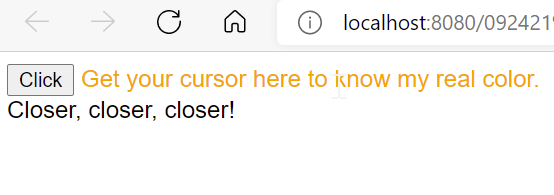For the topic today, I can't fully understand the logic that it works.
So forgive me if I don't explain that clearly. It takes time to digest the knowledge before outputting an understandable article.


<!DOCTYPE html>
<html>
<head>
<title>JS - HTML DOM Events - Part 2-1</title>
<script type="text/javascript">
function over(element){
element.style.color="orange";
}
function out(element){
element.style.color="black";
}
</script>
</head>
<body style="font-family:Arial";>
<button onclick="alert('Clicked');">Click</button> <!-- Registering an event -->
<span onmouseover="over(this);"
onmouseout="out(this);">Get your cursor here to know my real color.</span>
<div onmouseover="over(this);"
onmouseout="out(this);">Closer, closer, closer!</div>
</body>
</html>
When it comes to event handling, “this” represents the ..., ... objects.
<!DOCTYPE html>
<html>
<head>
<title>JS - HTML DOM Events - Part 2-2</title>
<script type="text/javascript">
// Advanced way to register an event dynamically through JS.
function init(){ //init = initialization
var btn=document.getElementById("btn");
var handler=function(){ // prepare a event listener, aka a event handler
alert("Clicked");
}
btn.addEventListener("click"/*event name*/, handler);
}
</script>
</head>
<body onload="init();"> <!-- Statically register the "load" event on <body>. Onload event will be initialized once the webpage is fully loaded. -->
<button id="btn">Click</button>
</body>
</html>
Feel free to comment and share your ideas below to learn together!
If you guys find this article helpful, please kindly do the writer a favor — LIKE this article.![]()
